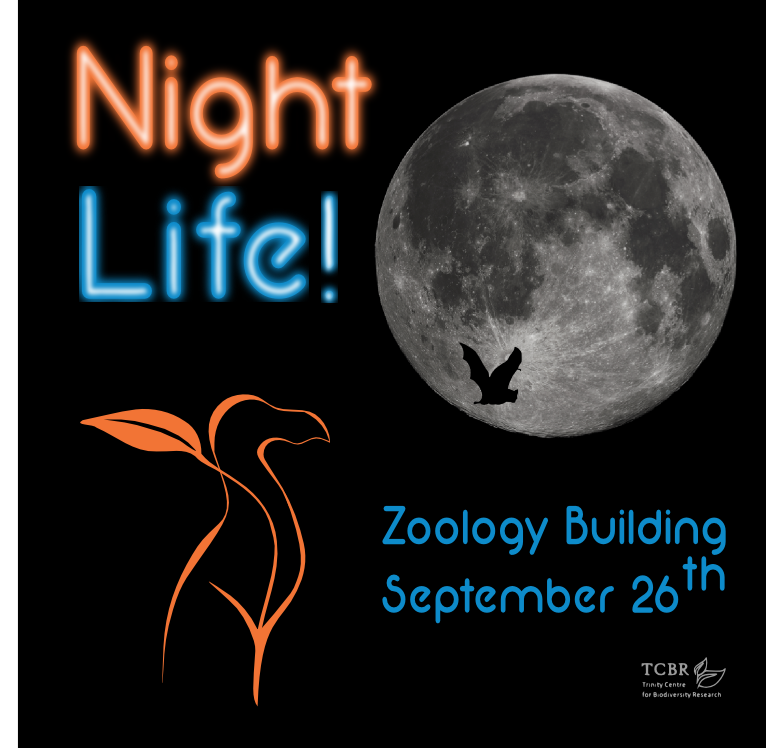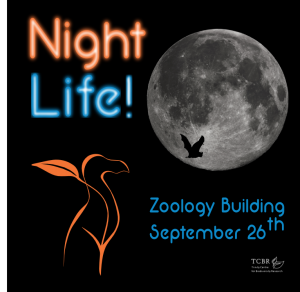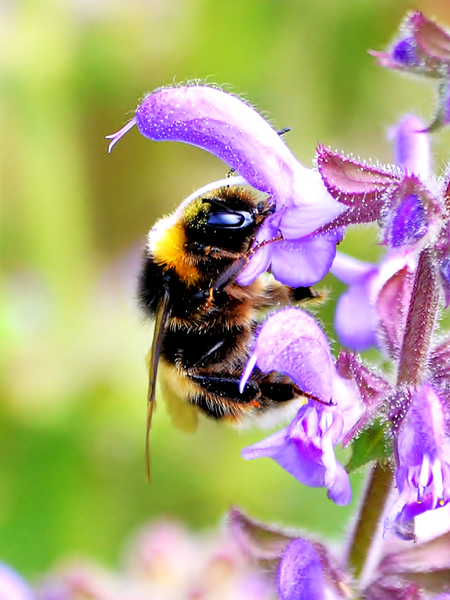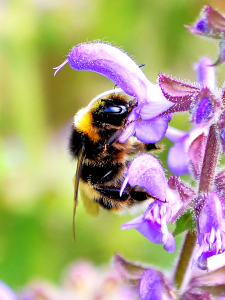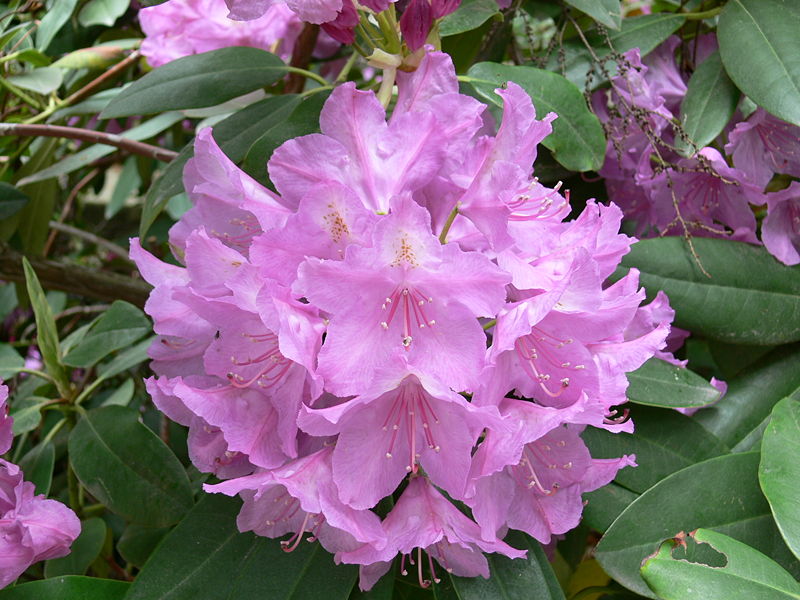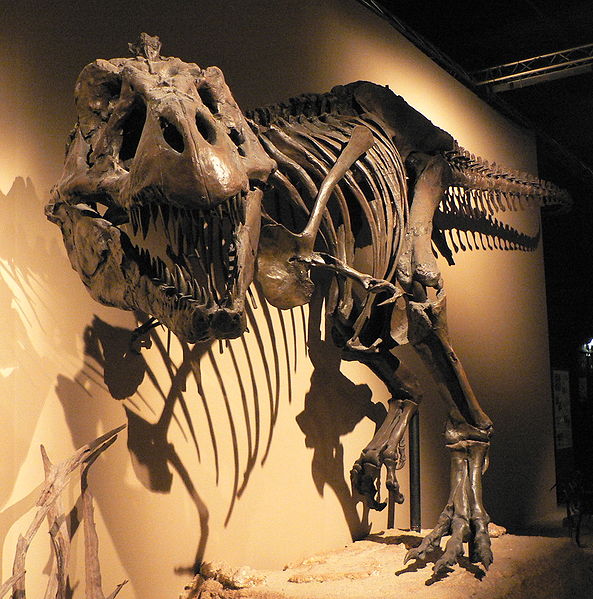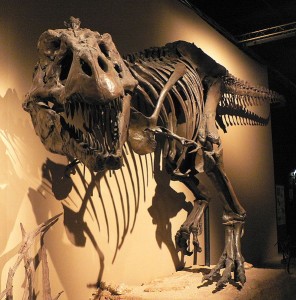Conference attendance can really impact your development as a Ph.D. student and give you great ideas for future collaboration and research. In March, I was lucky enough to attend the 2015 Benthic Ecology Meeting (or Benthics) in Quebec City, Canada. The Benthics meeting focuses on the ecology of the bottom layer of water systems, and this conference is mainly marine in focus. There were lots of great talks, one epic toboggan race, and nearly unlimited opportunities for networking and discussion. A quick overview of my three favourite talks is below. Check out what you missed and hope to see you in Maine next year! Continue reading “Everything’s Better Down Where It’s Wetter: Benthic Ecology Meeting 2015”
Ecology of religious beliefs
It is well known that your country of birth has a big influence on your religious outlook. That’s why Ireland is dominated by Christians whereas Iran has a mostly Muslim population. Your scientific outlook doesn’t escape from this either. For instance, it’s arguable that the idea of group selection is viewed much more favourably in the US than the UK. Turning back to religion, a group of authors have recently carried out a study on the ecology of religious belief. In their work they were able to predict the societies that believe in moralising high Gods by drawing on historical, social and ecological data.
As we’re in the beginning, we need a definition, so what exactly is a moralizing high God? These are “supernatural beings believed to have created or govern all reality, intervene in human affairs, and enforce or support human morality”. Supernatural belief has had a number of ecological correlates associated with it and this study points to environmental instability as one major driver. An environment with an unpredictable spatial or temporal distribution of resources lends itself to cultivating cooperation among the animals found within it. Among humans this results in a “reduction in cheating, increased fairness, and a tendency to cooperate”. And this is a fertile ground for the development of religious belief. One conclusion is that cultures in close proximity or those that share a common language exhibit similar religious beliefs.
However, the authors nuance this statement that this form of religion is being driven as a response to environmental harshness. In fact, they note that for societies living in a really harsh environment like the Inuits, variations tend to lead to more positive periods rather than negative ones and this seems to inversely correlate with the probability of believing in these type of gods.
One ironic point however (largely discussed in Jerry Coyne’s blog post), is that this paper is also influenced by the authors’ societal framework: a society traditionally believing in a god that they consider as moral and improving human lives. Taking that into account, some parts of the methodology heavily influence the results. The definition of morality by the authors and its benefits on humans as a species are highly depend on the societal framework where one is born. The “reduction in cheating, increased fairness, and a tendency to cooperate” is traditionally seen as a “good” thing for humanity in Abrahamic religions. Making it a universal or biological “right” behaviour is only the authors’ point of view (and probably one of their funding agencies).
Author: Adam Kane & Thomas Guillerme, @P1zPalu and @TGuillerme
Photo credit: http://mattleese.blogspot.ie/2009/12/we-dont-know-if-jesus-ever-rode-them.html
Tropical Field Course Kenya
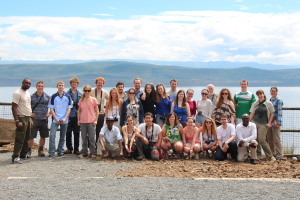 We’ve just returned from our annual Tropical Ecology Field Course in Kenya with our final year undergraduates. Our trip took us on a journey through the rift valley to the theme of biodiversity, conservation and sustainable livelihoods. Here are some of the sights of the trip:
We’ve just returned from our annual Tropical Ecology Field Course in Kenya with our final year undergraduates. Our trip took us on a journey through the rift valley to the theme of biodiversity, conservation and sustainable livelihoods. Here are some of the sights of the trip:
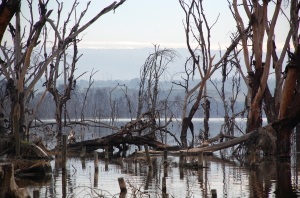
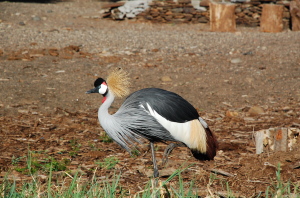
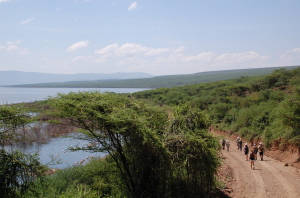
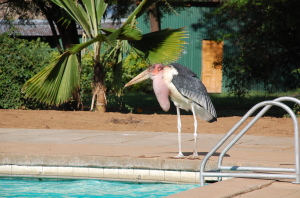
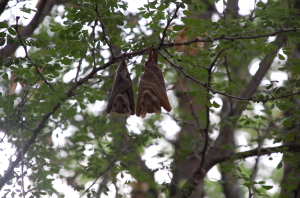
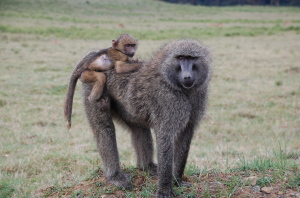
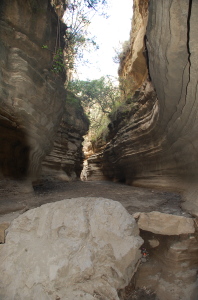
Author: Deirdre McClean
Photo credits: Deirdre McClean and Ian Donohue
A tern-up for the books
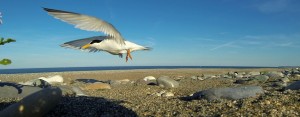
The last two years have seen successive record breeding seasons for Little Terns (Sternula albifrons) on the Irish east coast, with over 350 pairs breeding in 2013 and over 400 pairs in 2014. These record years are the result of 30 years of dedicated efforts to rescue Little Terns as an Irish breeding species, after population collapses in the 1980s and 1990s. As part of the BirdWatch Ireland team involved in these two exceptional years, we reflect on the conservation success story which has led to this remarkable tern-around in fortunes. Continue reading “A tern-up for the books”
Sustainability Through Stability
 I recently took part in a Tansley working group, an initiative that has a main working theme of advancing the ecological foundations of sustainability science. In this specific case we are seeking to construct a unified framework to help understand the multidimensional stability of ecosystems.
I recently took part in a Tansley working group, an initiative that has a main working theme of advancing the ecological foundations of sustainability science. In this specific case we are seeking to construct a unified framework to help understand the multidimensional stability of ecosystems.
In an era of increased human activity, significant climate change and biodiversity loss, an understanding of the mechanisms and drivers of ecosystem stability has vast implications for both ecological theory and the management of natural resources.
One large challenge in the study of ecological stability comes from the complexity of ecosystems. The dynamics of an ecosystem depend not only on the network structure, the interactions among different species, but also on external perturbations that vary in context, intensity and frequency.
Another huge challenge is the multidimensional nature of ecological stability, with its many measures and definitions including resistance, resilience and temporal variation, all of which are themselves interrelated. Stuart Pimm, a member of the Tansley working group, reviewed four measures of stability in one of his early publications in Science (Pimm, 1984) and one blog from Jeremy Fox even summarized 20 different stability concepts!
Both theoretical and empirical ecologists have spent decades exploring the role of community structure, interaction strength and disturbance in determining the dynamics and stability of ecosystems. However, most of these studies only focused on a single aspect of ecological stability, underestimating the impacts and recoveries of populations and communities.
Failure to consider the multidimensionality of stability is magnified when the relationships among these stability elements are quite fragile. For example, one lake or reservoir may maintain its stability in total biomass following a disturbance by adjusting its nutrient load, but the community composition has changed dramatically.
To create a unified concept of stability across theoretical, field-based and experimental research the confusion in using and defining these different elements of stability must be cleared up.
A typical confusion arises from the usage of the term resilience, which can be defined as the recovery time or speed following a disturbance to a pre-disturbed state; for instance the time taken for an area of scrubland to recover from a wild fire. The method used to calculate resilience in the local stability of theoretical communities is impossible to detect in the real world. So there is an urgent need to fill this gap by making a framework that suits both empirical scientists and theory development.
And that is one of the main challenges the Tansley working group seeks to face. We aim to construct a framework of ecological stability across major global ecosystems through a review of the most up to date measures of ecological stability (both empirical and theoretical) using specific case studies. This will help researchers adopt a more comprehensive approach to investigate stability and facilitate the comparison across different systems and scales in the future. We will also evaluate the feasibility in applying theoretical stability measurements to real ecosystems and abandon those which will are next to impossible to obtain from the real world.
To communicate the importance of the stability concept to a much broader audience, we will provide videos as well as vivid examples to illustrate the concepts of the different stability elements and how to measure them. We have an enthusiastic belief that the Tansley group will make a big contribution to the standardization of concepts and measurement of the multidimensional stability.
Author: Marvin Qiang, qyang@tcd.ie, @MarvinQiangYang
Photo credit: http://www.changedbygrace.net/2012/09/21/faith-floods-and-finances/
Night Life! Friday 26th Sept
This Friday, members of EcoEvo@TCD, as well as others from the Botany and Zoology departments and Trinity Centre for Biodiversity Research will present Night Life! in the Zoology building at Trinity College Dublin. The event is FREE to attend and we will be open from 6pm-10pm with the last entry at 9.30pm.
Night Life! is an opportunity to meet researchers and to find out the kinds of things we do. Prof. Yvonne Buckley will give you a taste of our research highlights, Kevin Healy will wow you with his research on snake venom (yes there will be snakes!), Sive Finlay will perplex you with the mysteries of tenrec evolution (if you don’t know what they are, come along and find out, they’re really cute!), Sean Kelly will explain how he discovers new bird species in Indonesia, Deirdre McClean will reveal the fascinating social lives of microbes, Thomas Guillerme will dazzle you with the lasers on his 3D scanner and the jaws of a shark, Claire Shea will amaze you by explaining why babies kick in the womb, Adam Kane will intrigue you with models of T.rex and maybe some vultures, and other students will be available to answer your burning questions about biology, evolution and ecology. So if you’re at a loose end on Friday night, come along and say hi!
Night Life! forms just one part of Discover Research Dublin, an annual event funded by the European Commission as part of European Researchers’ Night. The event is hosted by Trinity College Dublin, in partnership with the Royal College of Surgeons in Ireland. As well as Night Life! the evening will feature over 50 fun, interactive and free events and activities which will give you direct contact with researchers and allow for discovery, questions and participation. The event aims to challenge perceptions about researchers and show the creativity and innovation that exists in research across all disciplines. Activities are grouped under four broad themes – Body Parts, Creativity in Research, Meet the Researchers and Living Thought/Thinking Life.
We encourage you to visit, explore, discover and enjoy!
Author: Natalie Cooper, @nhcooper123
Image: Kevin Healy, @healyke
We’re back!
It’s that time of year again, the quiet before the storm of Fresher’s week and the start of a new academic year.
After our short break, EcoEvo@TCD is back and raring to go. You can expect lots more posts about our research, seminar series, outreach activities, conferences and fieldwork as well as tips and tricks for surviving in academia.
We’ve already kicked off the year with our second annual NERD club AGM. It was a great opportunity to discuss what we covered throughout the year and to make plans for the months ahead. (For the uninitiated, NERD club is our networks in ecology/evolution research discussion group but feel free to think of it in the true sense of the word too).
Here’s our NERD club prize winners for 2013/14
Best session: Paul for his talk on carnivory in plants
Best blog: Adam for “Flatland” and the “Heat and Light of Science Communication”
Best pun (aka the McMahon and Kane memorial punning prize): Adam and Thomas for “Gould Mine”
Contributor of the year: Kevin
Best PI called Andrew: What is Andrew Jackson? (No-one knows!)
We’ve had some excellent sessions about transferable skills, how to navigate the perils of academia and great discussions and collaborations on current research projects. We’ve got lots more interesting topics planned for the year ahead which will definitely make an appearance on EcoEvo@TCD.
It’s also been a very successful year for our blog. We had a winner at the ABSW science writers awards and two semi-finalists in another international blog competition. We’re also on the short list for the best science and technology blog in the Irish blog awards.
So whether you’re packing away your fieldwork gear after another season, dreading the darker evenings or sharpening your pencils for another academic year, rest assured that you can look forward to some more ecology and evolution- related musings from the EcoEvo@TCD team.
Author: Sive Finlay, @SiveFinlay
School of Natural Sciences Postgraduate Symposium 2014: Part 4/4
On the 20th and 21st of February we had our annual School of Natural Sciences Postgraduate Symposium. Over the course of two days many of our PhD students presented their work to the School. We also had two interesting plenary talks from Dr Sophie Arnaud-Haond (Ifremer) and Dr Lesley Morrell (University of Hull). Unfortunately our third speaker, Dr Fiona Jordan (University of Bristol) had to cancel due to illness.
For those of you who are interested in exactly what we work on here at EcoEvo@TCD, here are the abstracts from the PhD student presentations. Check out the TCD website for more details!
Ruby Prickett*: Geographical, ecological and genetic characterisation of perennial biomass grasses
*Unfortunately Ruby was unable to attend but we still have her abstract
Evidence suggests that increasing CO2 concentration from fossil fuels in the atmosphere is contributing to global climate change. There is great interest in producing energy from biological sources such as willow (Salix spp.), and the grass Miscanthus. This project aims to contribute to the development of grasses of the C4 genus Miscanthus and several C3 species (Dactylis glomerata, Festuca arundinacea and Phalaris arundinacea) for use as biomass crops, particularly on marginal land. This project aims to produce maps and species distribution models for each of the four species, to identify potential areas for production and their impact on biodiversity; to collect new accessions of Dactylis and Phalaris in the Northwest Europe and Miscanthus in Asia; and to assess the genetic diversity within each species.
Rebecca Rolfe: Identification of Mechanosensitive Genes during Skeletal Development: Functional evidence associated with the Wnt Signalling Pathway
Mechanical stimulation is important for the correct formation of the skeleton. Mutant embryos that develop with an altered mechanical environment result in defects in ossification and joint formation in the limb. We tested the hypothesis that mechanical stimuli influence the regulation of genes important in skeletal development by analysing the transcriptome of muscle-less and control skeletal tissue. We found 1,132 independent genes are differentially expressed with significant enrichment of genes associated with development and differentiation and cell signalling. In particular, multiple components of the Wnt signalling pathway are affected. An investigation of the functional effects of over/ectopically expressing Wnt pathway components in the developing chick will be tested using in ovo and ex ovo electroporation. It will be used to assess whether manipulation of the Wnt pathway in the developing joint mimics the phenotype that is seen when mechanical stimulation is removed, to identify whether or not disturbing the pathway alone causes the phenotypic disturbance seen when mechanical stimulation is removed.
Anurati Saha: The Influence of Mechanical Forces for the Definition of Articular Cartilage
Articular cartilage covers the terminal ends of bones at synovial joints. It allows pain-free movement with injury or degeneration leading to diseases such as osteoarthritis. Current treatment is whole joint replacement but stem cell regenerative therapies would offer a more sustainable solution. Previous research in the lab has shown that appropriate mechanical stimulation from movement of the embryo is required for normal joint formation; joints fuse when movement is absent. My project aims to increase our knowledge of mechanical regulation of joint development in a number of respects and to explore application of such findings to achieve stable differentiation of cartilage for alternative regenerative therapies.
In the first year of my PhD, I investigated the potential of embryonic limb bud cells to form cartilage in micromass culture. This allowed me to establish a protocol to achieve chondrogenesis and revealed the stage of maximum chondrogenic potential. This part of my work will be developed to compare the response of embryonic limb bud cells and adult progenitor cells from different sources (bone marrow and joint derived) to mechanical stimuli in 3D scaffolds, potentially valuable in the refinement of protocols for regenerative therapies
Claire Shea: Mechanotransduction in Skeletal Development: From Embryonic Development to Regenerative Therapies*
*Highly commended
Why do babies kick? Why do astronauts in zero-gravity lose bone mass? What are the causes of osteoporosis and osteoarthritis? The human skeleton allows us to move, but also requires movement for its own development and maintenance. Mechanical forces impact developing tissues, making embryonic movement (kicking and stretching) necessary for normal skeletal development. Understanding how a healthy skeleton forms is also important for skeletal disease therapies which seek to generate replacement tissues by recapitulating the normal developmental pathway with cell cultures. Wnt is a cell-signalling system known to be vital to many aspects of embryonic patterning, and has been implicated in mechanotransduction by our lab. My work focuses on identification of Wnt component genes responsible for transducing mechanical signals such as tension, hydrostatic pressure, or shear into a genetic response in developing joints and bones. To characterise gene expression patterns in normal vs. mechanically-altered environments, and to assess the role of Wnt, I use genetic mutants (mouse) and gene electroporation (chick). My goal is to apply this in vivo information to in vitro efforts, where stem cells embedded in 3-D scaffolds will be treated with an optimal genetic and physical environment to form functional, stable adult bone or cartilage tissue.
Sive Finlay: Tremendous tenrecs: curious convergence and distinctive disparity*
*Best talk 1/2
Understanding patterns of variation in morphological diversity, such as convergence and disparity, remains a challenge in evolutionary biology. In particular, questions of convergence and the predictability of evolution are central to the long-standing debate about the relative influences of historical contingency and determinism in evolutionary processes. Theoretical models indicate that some degree of convergence is expected by chance in most phylogenies. Therefore, quantitative analysis and explicit tests of superficial patterns are essential if we are to identify and understand significant cases of evolutionary convergence. However, most quantitative methods of identifying convergence were developed using relatively few groups for which detailed morphological and ecological data were already known. I want to test the wider applicability and usefulness of such quantitative methods by applying them to a new study group.
Malagasy tenrecs appear to be both disparate from each other and convergent with other “insectivore” mammal species. I’m assessing the evidence for significant morphological disparity within tenrecs and convergences among tenrecs and other mammals using a combination of geometric morphometric techniques and phylogenetic comparative methods. Subsequently, I will establish whether there are correlations between morphologically similar species occupying convergent ecological niches.
Kevin Healy: The evolution of potent venom in snakes*
*Highly commended
The ability of a predator to capture its prey is a fundamental element of ecological interactions. Such interactions can broadly be described as following general scaling laws underpinned by factors such as predator-prey body size difference’s, or habitat complexity. Unlike many predators, the ability of snakes to subdue and capture prey is mediated not by physical size but by their highly evolved venoms. Based on general predator prey scaling predictions I explore the hypothesis that venom potency is affected by ecological factors relating to the ability to quickly subdue prey. The factors I predict to increase venom potency include large prey size and low prey metabolic rate, as they reduce the speed of the venom affects, and habitat complexity, as more complex habitats would allow prey more opportunity to escape. Understanding the general drivers of venom evolution can lead to insights into the evolution of snakes and other venomous species and point to perhaps other untapped venom derived bio-resources.
Erin Jo Tiedeken: The impacts of Rhododendron nectar toxins on Ireland’s bees: deadly meal or valuable forage?*
*Best talk 2/2
Bees provide the valuable ecosystem service of pollination while visiting flowers and collecting nectar. We are currently experiencing a “pollinator crisis,” as pollinating species decline in response to anthropogenic pressures. Moreover, bees may exhibit species-specific responses to drivers of decline.
Rhododendron ponticum is an invasive flowering shrub that causes ecological and economic damage in Ireland. R. ponticum produces floral nectar in order to attract pollinators, but paradoxically this nectar contains neurotoxins called grayanotoxins. Our study investigated the impact of grayanotoxins on three bee species; Apis mellifera, Bombus terrestris, and a solitary Andrena species. For each species we tested whether consumption of nectar grayanotoxins had an impact on (1) survival, (2) consumption rate, and (3) behavior. Our results demonstrate that bees have critically different responses to grayanotoxins. Grayanotoxins are acutely toxic to honeybees, however, bumblebees exhibited no lethal or sublethal effects. Solitary bee survival was not affected, however bees exhibited temporary neurological symptoms after eating grayanotoxins. Rhododendron reduces available forage for honeybees and some solitary bees but could provide an important food resource for certain bumblebees. Our results demonstrate that studies of pollinator decline should include multiple species and should not extrapolate to species other than those included in the study.
Image Source: Wikicommons
School of Natural Sciences Postgraduate Symposium 2014: Part 3/4
On the 20th and 21st of February we had our annual School of Natural Sciences Postgraduate Symposium. Over the course of two days many of our PhD students presented their work to the School. We also had two interesting plenary talks from Dr Sophie Arnaud-Haond (Ifremer) and Dr Lesley Morrell (University of Hull). Unfortunately our third speaker, Dr Fiona Jordan (University of Bristol) had to cancel due to illness.
For those of you who are interested in exactly what we work on here at EcoEvo@TCD, here are the abstracts from the PhD student presentations. Check out the TCD website for more details!
Brian Murphy: The biocontrol and biofertilisation potential of fungal root endophytes
Fungal infections of crops are often devastating and costly. However, not all fungal infections are detrimental, and some are beneficial. Beneficial root infections often involve symbiotic root endophytes. Benefits to plants infected with endophytic root fungi include an increase in seed yield, enhanced resistance to pathogens and improved stress tolerance. Here, we report that grain yield in cold-stressed barley can be significantly increased after inoculation with a fungal root endophyte provided that a threshold level of nutrients is provided. We also show that endophytes derived from a wild barley species may provide similar benefits for barley grown under drought stress with low nitrogen input. These results suggest that locally-derived fungal root endophytes may have potential for reducing agricultural nitrogen input whilst maintaining acceptable yield. The full potential of these organisms is still to be determined and further studies are urgently required to develop specific beneficial root– endophyte associations, or combination of them, that are tailored to particular crops for maximum impact in agriculture. Many fungal root endophytes are amenable to axenic culture, sporulate readily and can be multiplied rapidly, suggesting that they could be developed as effective crop treatments in stressed crops and may have the potential to increase crop yield provided that the environmental and partner-specific conditions are met. The discovery of previously unrealised benefits associated with these fungi holds great future promise for developing economically and ecologically viable crop
Alwynne McGeever: The quantification of tree population dynamics*
*Highly commended
This project aims to quantify how the populations of Elm and Pine have changed geographically in Europe over the last 6000 years. Achieving this involves 3 tasks; (1) collecting pollen data on these species from the European pollen database (EPD), (2) comparing the timing of events in the populations at different geographic scales using the R package Bchron and (3) a focused study on the dynamics of Scots Pine in Ireland. Task 3 has two sub-tasks; (a) investigating the native status of Scots pine in Ireland, (b) investigating the past growth of Scots pine on bog surfaces in Ireland. This work will discuss the progress so far. Data has been successfully obtained from the EPD. Probability distributions of when events in the populations occurred in Ireland, the UK and Austria have been plotted, allowing the timing and synchronicity to be compared. The growth of Scots pine on bog surfaces in Ireland in the lead up to the Pine decline was also analysed, for which there were 3 distinct phases over the last 9000 years. The principle remaining work involves plotting events for every country in Europe and extracting pollen from a core to investigate a putative native population of Scots pine in the Burren, Co. Clare.
Aidan Walsh: The identification of important areas of plant diversity in Ireland
Records of vascular plants from the island of Ireland have been collated into a single plant distribution database. Rare and threatened plant species records were identified and subsequently mapped at the tetrad (2km by 2km) scale. We examined the overlap in spatial coverage between areas designated for the protection of biodiversity in Ireland and tetrads containing rare and threatened plant species. A proportion of the locations of these species occurred in the wider countryside and will not benefit from the protection provided by designated areas. For example, 22% of tetrads with records of Flora Protection Order species occurred outside of designated areas in the Republic of Ireland. The combination of designated areas and landscape within 4km of the designated areas contained over 90% of the locations where records of rare and threatened plant species occurred. These results indicate the importance of both designated areas and the wider countryside for biodiversity conservation, and offer an opportunity for the spatial targeting of conservation actions. The project will ultimately develop a method to identify important areas of plant diversity at the tetrad and hectad (10km x 10km) scale.
Susannah Cass: Is the grass ‘greener’? Biodiversity impacts of legume-supported grasslands.
Biodiversity is of great importance for the delivery of many key ecosystem services in agriculture (Altieri and Rogé, 2010) such as pollination, weed suppression, soil conditioning and pest control. Legume crops have a long history of use in traditional agricultural systems for the ability to fix atmospheric nitrogen (Graham and Vance, 2000) but have suffered a decline due to the ready supply of cheap inorganic fertilisers over recent decades (Graham and Vance, 2003). The Legume Futures project (EU FP7) aimed to investigate the potential for promotion of wide-spread legume-supported cropping in Europe, and the potential environmental impacts of such systems. We surveyed non-crop vegetation and earthworm (Lumbrucideae) biodiversity in semi-permanent and permanent agricultural grasslands, with and without legumes, at four established field sites belonging to the Legume Futures consortium (www.legumefutures.de). We found that responses to legume-supported cropping were different for non-crop vegetation and earthworms, and were dependent on the measure of biodiversity – abundance, species richness, diversity indices etc – considered. Mixed grass-legume swards supported more even and more diverse (Shannon’s H’ Index) non-crop vegetation communities but had less obvious impacts on earthworm communities.
Danielle McLaughlin: The molecular and morphological impact of notochord manipulation on the foregut in 3D explant culture
The notochord is a vital structure of vertebrate embryos, defining the anterior-posterior axis and strongly influencing molecular patterning and morphology of adjacent tissues such as the dorsally located neural tube. Despite their close proximity, the influence of the notochord on the ventrally located foregut as it separates to form oesophagus and trachea is undetermined. Oesophageal atresia is a relatively common congenital birth defect of unknown aetiology in which irregular foregut separation results in discontinuity of the oesophagus. In a well established model of this condition, the adriamycin mouse model, structural abnormalities of the notochord, frequently referred to as branches, are a distinctive feature. These notochord branches have a clear association with the site and severity of co-existing tracheo- oesophageal malformations. Further clinical and experimental examples of developmental disruption of the notochord occurring in conjunction with gastrointestinal tract anomalies including oesophageal atresia exist. We hypothesise that the notochord contributes essentially to the outcome in oesophageal formation and we have established an in vitro technique of 3D explant culture to examine the morphological and molecular impact of physical notochord
Sarah Hearne*: Limitations of the Fossil Record in Understanding Macroecological Trends
*Unfortunately Sarah was unable to attend but we still have her abstract
“To know your future, you must know your past” (Margaret Jang)
Since the fossil record was first recognised as the history of life on earth it has been an invaluable aid to understanding the evolution and diversity of life. It has been used to help explain and understand past and present distribution of biota across the globe and has increasingly informed our understanding of how life reacts to changes whether sudden, such as asteroid impacts, or gradual, such as climate change. Yet there are a host of biases inherent in the fossil record that make interpretation difficult. Many of these biases are either unknown or ignored by many researchers despite the fact that they are significant and limit the ability of the fossil record to reveal macroecological trends. Until these biases are accepted as problematic and efforts are made to counter them, macroecological interpretations of the fossil record will be little more than speculation.
Paul Egan: Variation of nectar toxins in space, time and habitat – is there evidence for functional significance?
The presence of toxic secondary metabolites in nectar represents somewhat of an ecological paradox. Although a number of explanations have been offered which pose a functional significance of this phenomenon; empirical tests of these hypotheses remain scarce. Here we employ use of an invasive species (Rhododendron ponticum) ideally suited as a model system, and investigate expression of diterpene grayanotoxins in nectar. Through comparisons within and between the species’ native and invasive range, possible post-invasion evolution and plasticity of this trait is explored in response to a number of spatial and environmental factors. In addition, a functional basis to toxic nectar is tested through examination of two potentially opposing processes: A.) if or how toxin levels are regulated in nectar over the course of phenological development of flowers, and B.) the extent to which phenotypic correlation with other plant tissues may in fact explain expression of toxins in nectar (e.g. as due to anti-herbivore defence in phloem, leaves, flowers etc.). In general, our findings reveal some important factors which influence nectar toxicity, indicative of both independent and adaptive regulation of this trait within plants. Our current studies seek to further test this purported adaptive function, examining the simultaneous and opposing selection pressures posed by pollinators and herbivores on toxin production, and the resultant impact on plant fitness.
Image Source: Wikicommons
School of Natural Sciences Postgraduate Symposium 2014: Part2/4
On the 20th and 21st of February we had our annual School of Natural Sciences Postgraduate Symposium. Over the course of two days many of our PhD students presented their work to the School. We also had two interesting plenary talks from Dr Sophie Arnaud-Haond (Ifremer) and Dr Lesley Morrell (University of Hull). Unfortunately our third speaker, Dr Fiona Jordan (University of Bristol) had to cancel due to illness.
For those of you who are interested in exactly what we work on here at EcoEvo@TCD, here are the abstracts from the PhD student presentations. Check out the TCD website for more details!
Aoife Delaney: Eco-hydrology of humid dune slacks*
*Highly commended
Dune slacks are hollows in coastal sand dune systems where the groundwater table is close to the surface. Many dune slacks flood in winter to form temporary ponds which can last from a few weeks to several months. Humid dune slacks are an Annex I habitat (2190) and in accordance with Article 17 of the Habitats Directive they have been mapped and assessed in Ireland on the basis of their vegetation. During monitoring in 2013, Humid dune slacks (2190) were assessed as Unfavourable-Inadequate and topics for further research were identified. The extent and effect of water abstraction and wastewater from recreation facilities has not been firmly established in Ireland, and work relating biological communities to water quality or depth and duration of flooding has focussed almost entirely on vegetation up until now.
This project will assess variation in vegetation, mollusc and water beetle communities present in dune slacks in Donegal, Mayo, Kerry and on the east coast. It will also investigate the effects of land management by comparing biological communities of sites which are under different management regimes such as extensive pasture and golf courses. The hydrological functioning of dune slacks will be related to biological communities they support.
Anne Dubearness: Systematics of the genus Embelia Burm.f. (Primulacae — Myrsinoidae)*
*Highly commended
Primulaceae subfamily Myrsinoideae is a species-rich tropical group containing over 2000 species, with several taxonomically difficult genera with poorly defined limits and many novelties needing description. Within the subfamily, Embelia is a genus of climbing shrubs distributed mostly in South and South-East Asia and tropical Africa. The last monograph of this genus (made by Mez in 1902) recognised 8 subgenera and 92 species, but the total number of species is currently estimated at 140. The systematics of this group needs investigation using a modern phylogenetic approach: indeed, Embelia displays extensive morphological variation (especially regarding the position, shape, size and merosity of the inflorescences) and is only distinguished from other Myrsinoideae by a climbing habit and distichous leaves. This project aims to combine molecular and morphological data in order to investigate the systematic of Embelia at 3 levels: first of all the monophyly of the genus must be tested, then the existing subgenera must be assessed and refined in order to produce a taxonomic framework of the genus, and the final focus will be on the subgenus Euembelia Clarke, which contains more than 65 species and could certainly be split into several sections.
Thomas Guillerme: Combining living and fossil taxa into phylogenies: the missing data issue*
*Highly commended
Living species represent less than 1% of all species that have ever lived. Ignoring fossil taxa may lead to misinterpretation of macroevolutionary patterns and processes such as trends in species richness, biogeographical history or paleoecology. This fact has led to an increasing consensus among scientists that fossil taxa must be included in macroevolutionary studies. One approach, known as the otal evidence method, uses molecular data from living taxa and morphological data from both living and fossil taxa to infer phylogenies. Although this approach seems very promising, it requires a lot of data. In particular it requires morphological data from both living and fossil taxa, both of which are scarce. Therefore, this approach is likely to suffer from having lots of missing data which may affect its ability to infer correct phylogenies. Here we assess the effect of missing data on tree topologies inferred from total evidence supermatrices. Using simulations we investigate three major factors that directly affect the completeness of the morphological part of the supermatrix: (1) the proportion of living taxa with no morphological data, (2) the amount of missing data in the fossil taxa and (3) the overall number of morphological characters for all of the taxa.
Florence Hecq: Effects of scale and landscape structure on pollinator diversity and the provision of pollination services in semi natural grasslands
Over recent decades, humans have been changing the environment more rapidly than in any other period of history. Technological advances and new agricultural policies have led to a simplification of landscape structure resulting in the loss and fragmentation of habitats for flower-visiting insects which play an important ecological role as pollinators. Pollinating insects are very mobile and are influenced by the availability of flowers and nest sites over a scale of several kilometres.
In this study, we investigated the effects of the complexity of landscape structure on the diversity of four pollinating taxa and on the provision of pollination services to four plant species. Pollination data were collected in 19 semi-natural grassland sites in north midlands region of Ireland and related to the composition and configuration of surrounding landscape at two spatial scales (500m and 1km radius around sampling sites). Landscape structure was characterised by digitising each landscape feature with aerial photographs and GIS, and then ground-truthed using field-based surveys. Knowledge of these pollination/landscape scale relationships is crucial for a better understanding of pollinator diversity patterns and should be helpful for future conservation management decisions; ensuring essential levels of pollination services to wild plants are maintained.
Lindsay Hislop: Does nutrient enrichment moderate the effect of water level fluctuations on littoral communities?
Freshwater abstraction from lakes in order to support a growing human population is rapidly becoming a major global stress on lacustrine ecosystems. The consequent amplification of water level fluctuations disproportionately impact lake littoral zones, which contain the majority of their biological diversity. However, remarkably little is known about the impacts of amplified water level fluctuations on littoral assemblages and less still is known about how they interact with nutrient enrichment, one of the most pervasive and important of human disturbances on the biosphere. To address this, we established an experiment in large outdoor pond mesocosms where we quantified the effects of water level fluctuations and nutrient enrichment, both separately and together. We found that the impacts of water level fluctuations on both primary producers and benthic consumers varied significantly along the depth gradient. However, we found no interactions between nutrient enrichment and water level fluctuations. Given that the problem of amplified water level fluctuations is likely to be exacerbated considerably by predicted increases in climatic variability and enhanced water demand, our findings have profound implications for the conservation and management of global aquatic biodiversity.
Nuria Valbuena Parralejo: The impact of artificial sub-surface drainage on greenhouse gas emissions, change in soil carbon storage and nutrient losses in a grazing cattle production system in Ireland
In Ireland, over the 33% of milk is produced on a Heavy Soils farms. Heavy Soils are characterised by low permeability and often form in high rainfall areas. The combination of both can lead to waterlogging, promoting soil compaction which significantly affects the grass production. Drainage has been shown as an effective tool for improving the soil permeability. Little data is available to assess the effect of the artificial subsurface drainage of a grassland production system, on greenhouse gas emissions, change in soil carbon storage and nutrient losses. This experiment will be carried out in Teagasc Solohead Research Dairy Farm (latitude 52° 51’ N, 08° 21’ W; altitude 95 m a.s.l.). Different treatments (i) mole drain winter, (ii) mole drain summer, (iii) gravel mole and (iv) control were imposed in one site of the farm in 2011. A new experiment will be set up at a different site on the farm in summer 2014 with (i) control and (ii) gravel mole into collectors. Nitrous oxide (N2O) flux measurements, soil respiration measurements, soil total carbon and total nitrogen analysis, soil nitrogen mineralisation and net nitrification, water analysis, water table measurements and herbage production will all be perform in both sites over two years.
Adam Kane: Ontogenetic dietary partitioning in Tyrannosaurus rex*
*Highly commended
Obligate scavenging in vertebrates is a rare mode of life, one which requires very specialized morphologies and behaviours to allow the scavenger to cover enough area to find sufficient carrion. Yet, a number of studies have suggested that Tyrannosaurus rex occupied this niche with others arguing for its role as an apex predator. In this study we move away from the polarised predator-scavenger debate and argue that T. rex underwent an ontogenetic dietary shift, increasing the proportion of carrion in its diet as it aged due to both the increased availability of carrion through direct intraspecific and interspecific competition and also by exploiting resources unavailable to its smaller competitors, namely bone. We follow an energetics approach in our study to explore the effect of this previously unrealised resource on the ecology of T.rex and look at the impact of the proposed ontogenetic dietary shift.
Image Source: Wikicommons








